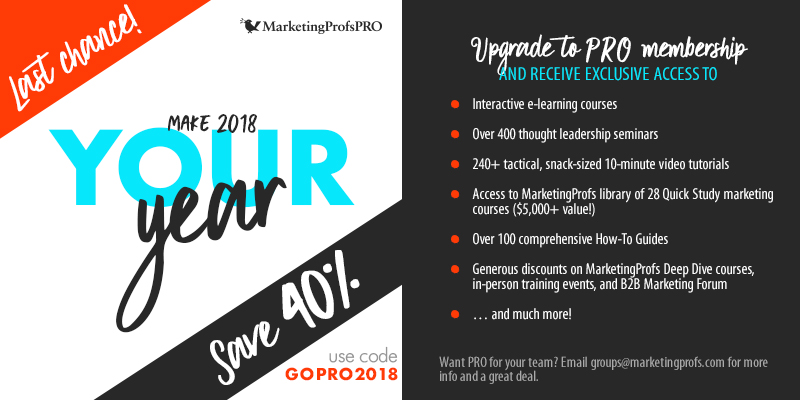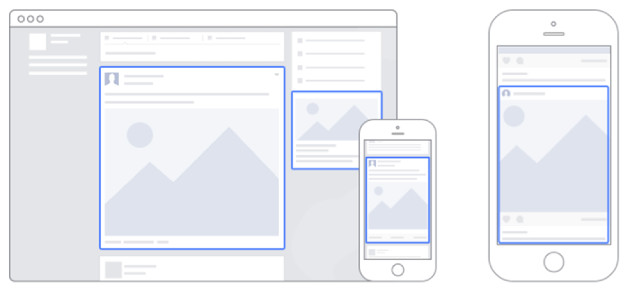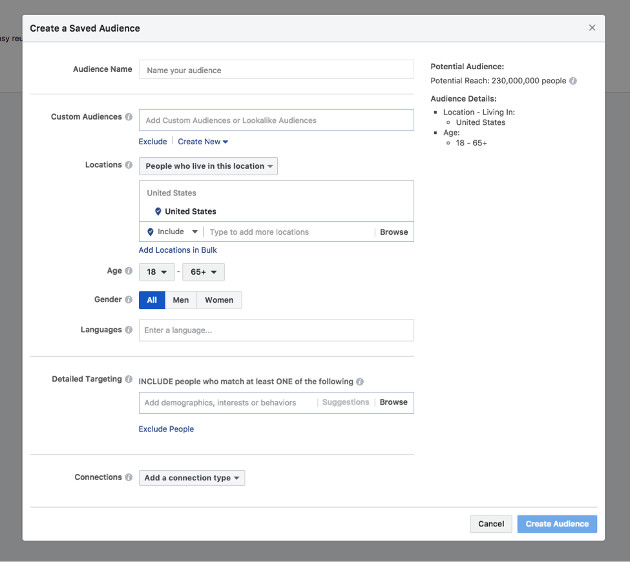Author: Madelyn Newman [Sponsored Content] / Source: MarketingProfs


With over 2 billion Facebook monthly users as of September 2017, it’s no wonder the Facebook Ads platform is becoming a staple of every marketer’s social media strategy. Facebook is the world’s most popular social media platform, and ad spend on its network is booming. Instagram ad revenue alone is expected to exceed that of Google this year, with an estimated $2.81 billion spent by Instagram advertisers worldwide.
Although advertising on Facebook may seem like one of the most immediate ways to achieve impact at a low cost, many marketers aren’t seeing the success they’re hoping for when they start experimenting with Facebook. Typically one of two scenarios happens with new Facebook advertisers:
- They see low cost-per-click (CPC), but none of these clicks lead to purchases or conversions.
- Their CPC ends up being too high.
What gives?
The best Facebook advertisers understand social ≠ search
The key differences between a social media platform such as Facebook and a search engine like Google are what leaves most new Facebook marketers frustrated: They run their Facebook ads similar to how they manage Google AdWords. And they shouldn’t.
With Google, your prospects are searching for you. They know what they need, and they’re actively interested in what you’re offering. With Facebook, users are simply browsing and socializing, and you’re competing with loads of unrelated content. You need ads that are eye-catching and engaging, and ads that drive real value for your potential leads.
How can you achieve that? Let’s walk through each of the five things elite Facebook advertisers do differently that you can adopt to elevate your social media marketing.
Note: If you work in digital marketing, I highly recommend tuning into our Pro Webinar series, where we often go over tips and tricks from highly successful marketers working in social media, search, and email.
1. They carefully choose where their ads appear
Facebook currently offers three major ad placements:
- Desktop News Feed
- Desktop Right Column
- Mobile News Feed

Although other ad placements are available, such as within Groups, those three are the most commonly used. Master their pros and cons with the following tips, and you’ll immediately begin deploying your ads more strategically:
- Desktop News Feed tends to be the first go-to option for most marketers, and the priority placement can get you a great conversion rate. The problem is that this Facebook ad placement is both competitive and expensive.
- Desktop Right Column ads tend to take a backseat to News Feed ads because they’re so out of sight, and many marketers don’t optimize for the location, and that can lead to overspend. The Desktop Right Column is great for retargeting, but not initial engagement.
- Mobile News Feed gives you the most bang for your buck on Facebook, and I highly recommend testing out mobile placements. Just as with other ad platforms, the shift from desktop to mobile is aggressively increasing. According to Statista, in 2016 about 97% of Facebook’s ad revenue came from mobile advertising. Roughly 1.15 billion daily user access the social network on mobile—a huge audience to use your spend on. Plus, brand discovery and initial engagement can often be had for much cheaper on mobile, so it’s definitely in every marketer’s favor to use mobile ads.
Pro Tip: If your business does business over the phone, Mobile News Feed can be a powerful placement to drive valuable phone calls to the business. After all, device matters and most mobile devices are smartphones. Make it easy for leads to convert by having a phone call CTA on mobile News Feed ads.

Pro Facebook marketers know that campaigns succeed or fail because of audience targeting. In the world of Facebook Ad optimization, it’s critical to know that choosing the right audience is more important than ad creative.
Facebook provides extremely useful advanced targeting options. Master the following three ways to define your audience inside of Facebook Ads Manager, and you’ll start to see why it can make or break your efforts:
- Core Audiences: Select your audience manually based on characteristics, such as age, location, interests, and behaviors.
- Custom Audiences: Facebook gives you the ability to securely upload a contact list of people you would like to reach. Although there are several data categories you can upload to create these audiences, the most common are email addresses and phone numbers. (Many of the 70,000+ businesses using CallRail for call tracking have had great success with Facebook retargeting by simply uploading their call log to create a custom audience based on caller IDs.)
- Lookalike Audiences: Find people who are similar to your current customer base by building a lookalike audience based on your custom audience.

When choosing your audience, it’s critical to keep…
Peter Bordes Jr
Founder & Managing Partner Trajectory Ventures. Lifetime entrepreneur, CEO, Board Member, mentor, advisor and investor.
Obsessed with the infinite realm of possibility in disruptive innovation driving global digital transformation in technology, cloud-based infrastructure, artificial intelligence, data, DevOps, fintech, robotics, aerospace, blockchain and digital media and advertising.

